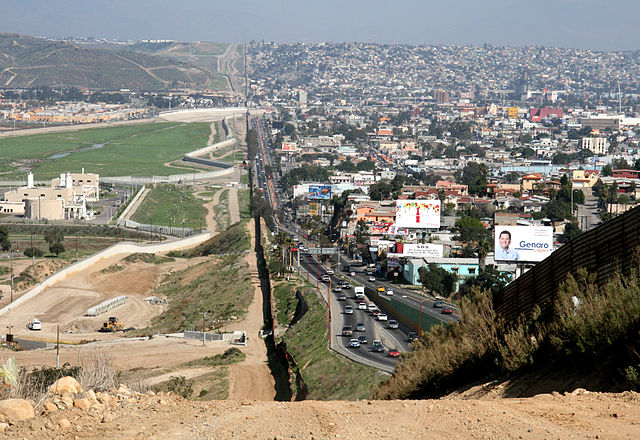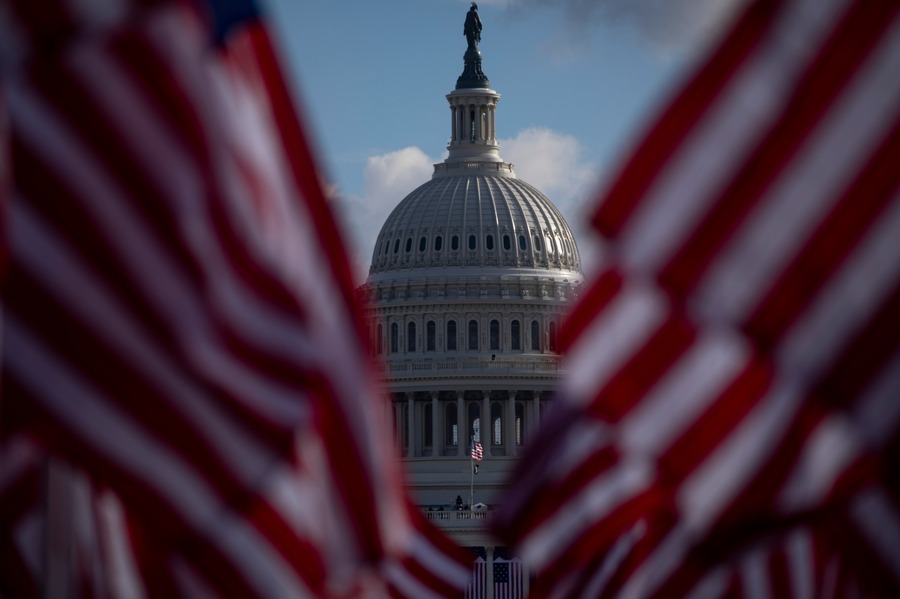What Comes Next for Trump's Border Wall?
Yesterday, President Donald Trump took the first step toward constructing a wall along the U.S.-Mexico border. The executive order that he signed (one of two from yesterday), ordered the federal government to begin planning, designing, and constructing the much-promised wall, shift federal funds toward its construction, and provide a report on the security of the southern border within 180 days.

Published by The Lawfare Institute
in Cooperation With

Yesterday, President Donald Trump took the first step toward constructing a wall along the U.S.-Mexico border. The executive order that he signed (one of two from yesterday), ordered the federal government to begin planning, designing, and constructing the much-promised wall, shift federal funds toward its construction, and provide a report on the security of the southern border within 180 days.
The wall’s details are a bit murkier than the executive order’s language, having shifted during Trump’s presidential campaign, transition period, and first days in office. Depending on the time period in question, the wall has been quoted to be a height of 30, 40, 55, 65 or 80 feet (for context, the Great Wall of China reaches a measly 25 feet); to span either the full or half length of the border; and to include, or at times not include, fencing. Even the estimated cost of the wall has moved up and down, with President Trump suggesting that it will total between $8 billion and $12 billion and Paul Ryan stating that it will be between $8 and $14 billion. This is of course compared with independent estimates that put it between $15 and $25 billion (Bernstein Group), between $27 and $40 billion (MIT), or $31 billion (Gleeds Worldwide).
By way of background, there are already 653 miles of fencing along the southern border, which is the equivalent of the distance between Miami and Atlanta along a border that stretches roughly the distance from Miami to Maine. About half of the current fencing is concentrated in urban and easily crossed areas of the border (and for the wall wonks out there, it is a mere 18 feet of steel fencing). The additional fencing in remote areas is less robust and primarily aimed at blocking vehicles, rather than people.
Leave aside the question of whether or not a border wall is a good idea. What is pretty clear is that a wall is a very expensive approach to border security that will neither stop undocumented immigration nor stop drug trafficking. The simple truth is that no infrastructure project will accomplish these objectives, although it could initially slow them down as migrant smugglers and traffickers figure out how best to reroute. Instead, as the new administration’s wheels churn into motion, let’s go over what we can expect to see happening over the coming months.
First, as mentioned above, a border wall will not be cheap, and it will surely be rife with run-over costs and scheduling delays. We need only look to former President George W. Bush’s border fence construction as an example. For the mandated 700 miles of border fencing under the 2006 Secure Fences Act, the cost of border fencing ranged from $400,000 to $15.1 million per mile (depending on the type of fencing, time of construction, and the terrain). This meant that the entire construction totaled around $2.3 billion for the initial costs, plus millions more for yearly maintenance.
By all accounts, President Trump’s wall will be much more expensive, given its construction in more rugged terrain and use of pricier materials such as concrete. This cost will balloon further if Trump fulfills his promise to extend the wall underground in a bid to prevent any cross-border tunnels.
By way of comparison, politicians on both sides of the aisle (ranging from Michael McCaul to Bernie Sanders) have historically called for securing the border using cheaper technological alternatives. This virtual border of sorts includes surveillance by means of thermal sensors, infrared cameras, drone, and blimps. To be fair, this approach hasn’t exactly been successful on a border-wide scale in the past. Yet Border Patrol agents have welcomed a move toward flexible and area-specific tools that allow them to design their own approaches toward securing the border.
Second, we can expect complicating pushback from environmental groups, Native American communities, and border residents.
The U.S.-Mexico border area is one of the most biodiverse regions of the country; it includes three important wildlife refuges and Big Bend National Park (which cuts through 118 miles of border). Environmental groups have already spoken out against the risks that the fence would pose to endangered and migratory species, including, for example, bighorn sheep in California whose genetic diversity depends on the cross-border migratory corridors. Yet while this could generate local backlash, it won’t ultimately stop the fencing. The Real ID Act of 2005 allows the Department of Homeland Security to waive 37 federal laws to construct border fencing, including the Endangered Species Act, in building this particular barrier.
The border is also defined in places by the Rio Grande and Colorado River, which are bilaterally managed through a series of treaties. These agreements ban the United States and Mexico from erecting physical barriers that would disrupt the water flow, block the rivers’ floodplains, or induce flooding. For Trump’s border wall, this would mean pushing its construction deeper into U.S. territory.
As for tribal land, Trump will face lashback from as many as 26 federally-recognized Native American communities located along our southern border. This includes the Tohono O’odham Nation, whose land spans across 75 miles of borderland and has already vocally opposed the construction of a border wall on its territory. Federal law requires the Bureau of Land Management to carry out consultations with tribal governing bodies before making any changes to the use of reservation land, and building a wall would require a stand alone bill in Congress to condemn the land.
And with respect to cross-border farmers and ranchers, Trump’s executive order doesn’t specify how he plans to gain access to the 67 percent of borderland that the federal government doesn’t currently own, most of which is located in Texas. During the Bush administration’s border fence construction push, many property owners rejected the federal government’s initial offers to buy their land. In response, the government filed eminent domain lawsuits, driving up fence expenditures and causing construction delays. It’s unclear if Trump will follow the same playbook, but it is unlikely to be a smooth or short process.
Third and finally, given the border wall’s symbolic nature and Mexico’s alleged payments (either directly, indirectly, through remittance blackmail, or through reimbursements) for the wall, its construction will further damage the U.S.-Mexico relationship. Last night, Mexican President Enrique Peña Nieto recorded his most strident message yet, rejecting a wall along the U.S.-Mexico border and once again making clear that his government would not pay for any construction. Trump responded this morning with a tweet that if Mexico won’t pay then it would be best to cancel his and Peña Nieto’s planned meeting in DC next week. The U.S.-Mexico relationship looks poised to continue deteriorating. President Trump’s executive order gave federal agencies 30 days to publicly report any U.S. aid to Mexico over the past five years, a fact which followed comments that foreign aid cuts could be used as leverage in payment negotiations. Look for U.S.-Mexican relations to become a serious foreign policy problem for the first time in decades.
With President Trump signing this executive order four days into his presidency, it’s clear that he wants to immediately begin construction on this signature policy initiative. However, even in the best of scenarios, it could take well beyond Trump’s first term in office to fully design, finance, and erect the entire border wall. Only time will tell which version of the wall ends up materializing along the border, but in any of its many possible forms, it won’t be an easy build.






